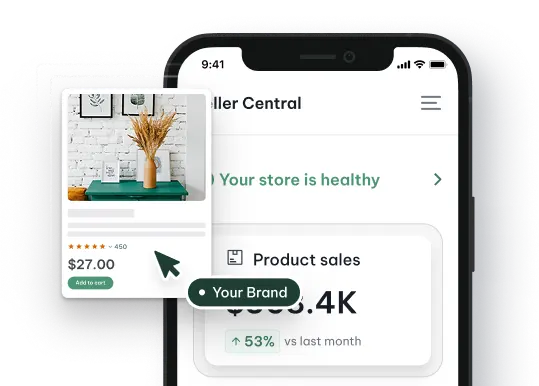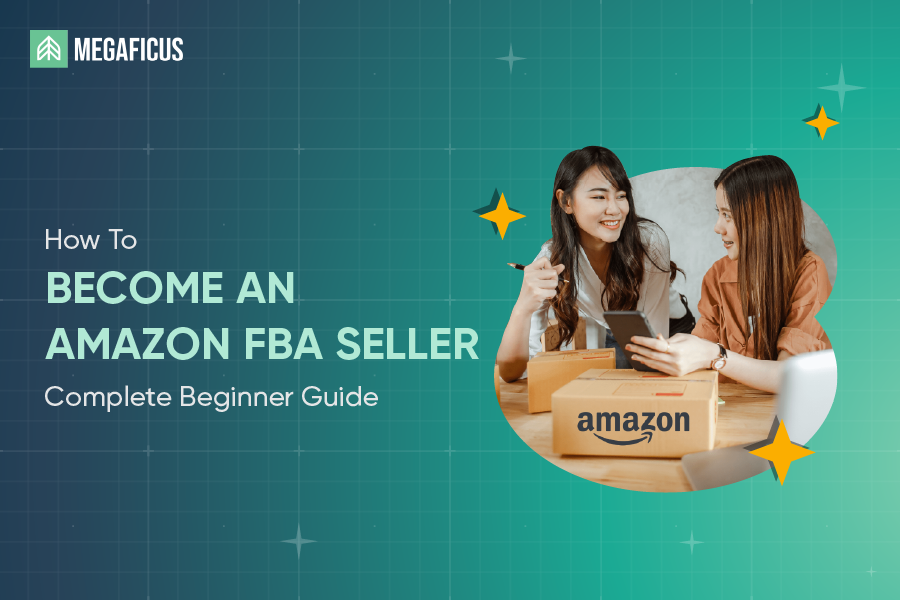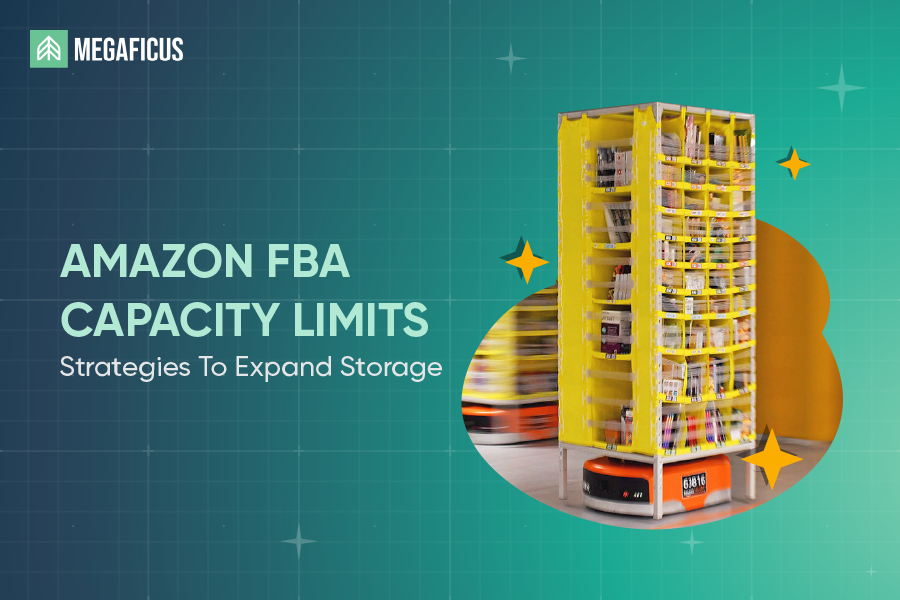Selling on Amazon but not running ads? You’re missing a key growth tool. Amazon Digital PPC isn’t just for big brands – it helps all sellers get seen and sell more. Here’s how to set up and level up your Amazon Digital PPC campaigns in 2025!
Quick Summary
- Amazon Digital PPC helps new sellers gain visibility and grow sales by promoting products via targeted ads shown to high-intent shoppers.
- How it works: Keyword bidding, ad auctions, pay-per-click model, and performance-based visibility placement.
- How to set up: Choose ad type, define budget and targeting, set bids, create ad group, launch campaign, and monitor results.
- Best practices: Focus on high-converting keywords, apply negative keywords, A/B test creatives, and use smart tools for better performance.
What is Amazon Digital PPC?
Amazon Digital PPC or Amazon PPC (Pay-Per-Click) is a type of ad that helps your product appear in top spots on Amazon, like search results, product pages, or “Sponsored” sections.
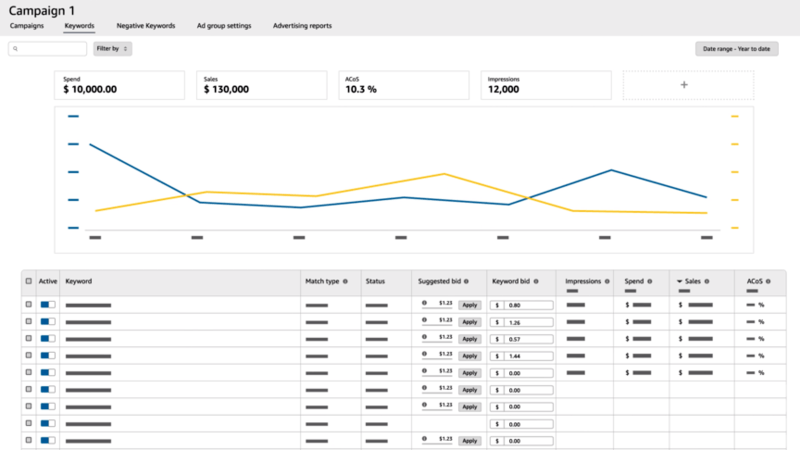
It’s especially useful for new sellers who want to get more eyes on their products. Many successful Amazon sellers believe that PPC is essential, even more important than having a low price or a great product photo, because if no one sees your product, they can’t buy it. PPC helps you get that visibility.
What are the benefits of using Amazon PPC?
Amazon PPC offers powerful advantages for sellers, especially those new to the platform. Here’s how it helps grow your business:
- Boosts visibility fast: Your products can appear at the top of search results, letting you stand out and attract traffic even before achieving organic rankings. As your ads reach high-intent shoppers, you’re more likely to turn views into sales.
- Targets the right audience: With advanced targeting, you can show your ads to people who are most likely to buy, based on keywords, competitor listings, or shopper behavior.
- Gives full budget control: With Amazon PPC, you have complete control over how much you spend on advertising. You can also set a daily budget, adjust your bids whenever needed, and pause your campaigns at any time.
- Provides measurable results: Amazon PPC gives you detailed performance data in real time. You can track how many people click on your ads, how many of them make a purchase, and how much each sale costs.
How does Amazon PPC work?
Amazon PPC runs on a keyword auction system. You bid on keywords, and your ad appears when shoppers search those terms. You only pay when someone clicks your ad, not just when it shows up.
For example, if you bid $2.00 and the next highest bid is $1.50, you win the ad placement. And here’s the fun part: you only have to pay slightly more, like $1.51, instead of your full bid.
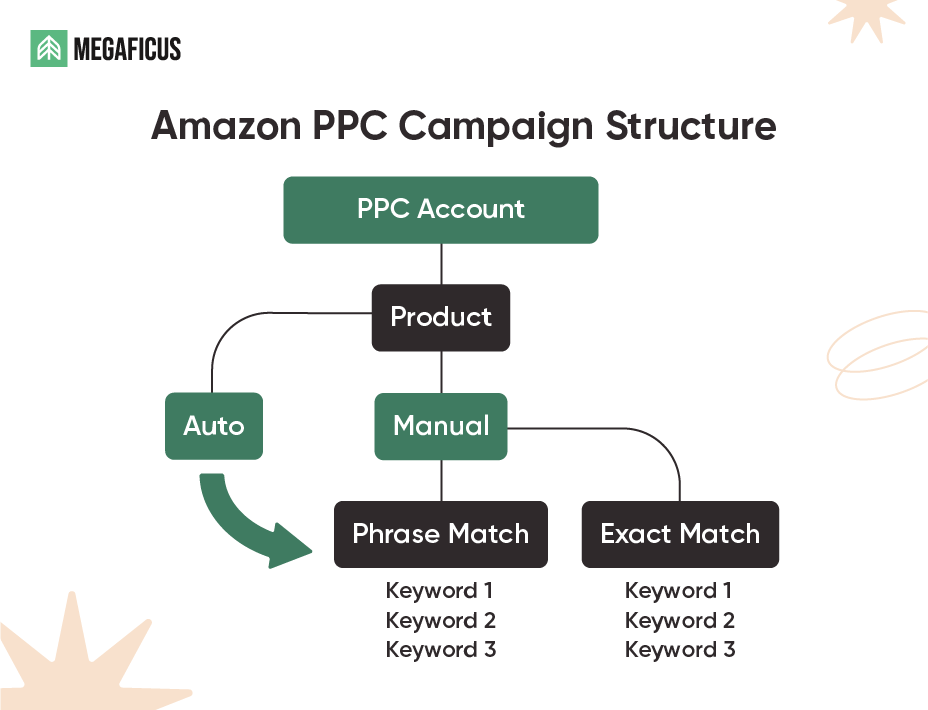
However, winning a PPC auction isn’t just about bidding the highest amount. Amazon’s algorithm also considers several other factors, including:
- How relevant your product is to the keyword
- Your historical ad performance (like click-through rate)
- The overall quality of your product listing (such as images, titles, and bullet points)
- Your seller reputation (like customer reviews and shipping performance)
- Seasonal demand and current market trends
In other words, a well-optimized product listing can still win the ad placement even with a modest bid. Amazon prioritizes showing ads that are likely to result in a sale – not just the ones that offer the highest bid.
What ads can you use for Amazon PPC?
Amazon offers 3 main types of PPC ads – each tailored to different goals, placements, and levels of control. Choosing the right one can boost visibility, drive sales, and grow your brand.
Sponsored Products
Sponsored Products is Amazon’s most popular and beginner-friendly digital PPC ad type, placing your products in high-visibility spots, such as top of search results, alongside listings, and on product detail pages. These ads blend seamlessly with organic listings but are marked as “Sponsored.”
Best for: Driving sales, improving rankings, getting attention for new listings
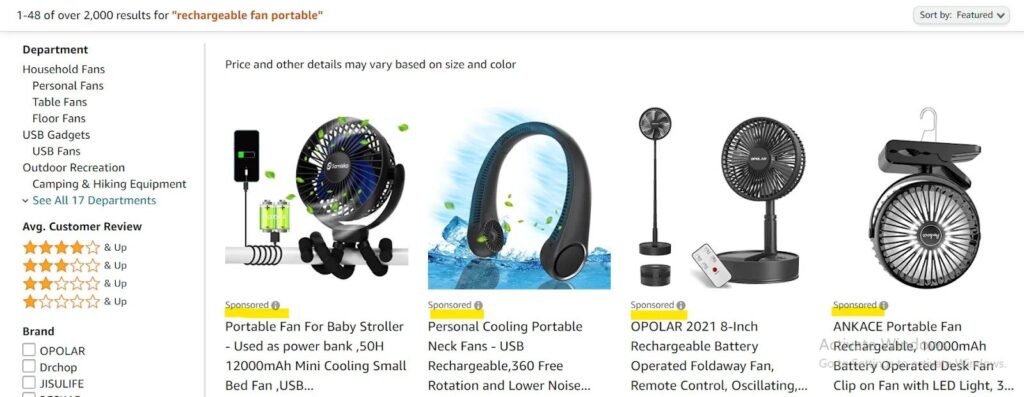
Sponsored Brands
Sponsored Brands are a powerful Amazon PPC ad format designed to increase brand awareness and showcase multiple products at once. These ads appear prominently at the top, within, and alongside Amazon search results, making them highly visible to shoppers.
Unlike Sponsored Products, this ad type offers richer visual formats, such as custom logos, headlines, product collections, and short videos that grab attention and engage shoppers.
Best For: Promoting brand, launching product bundles, driving traffic
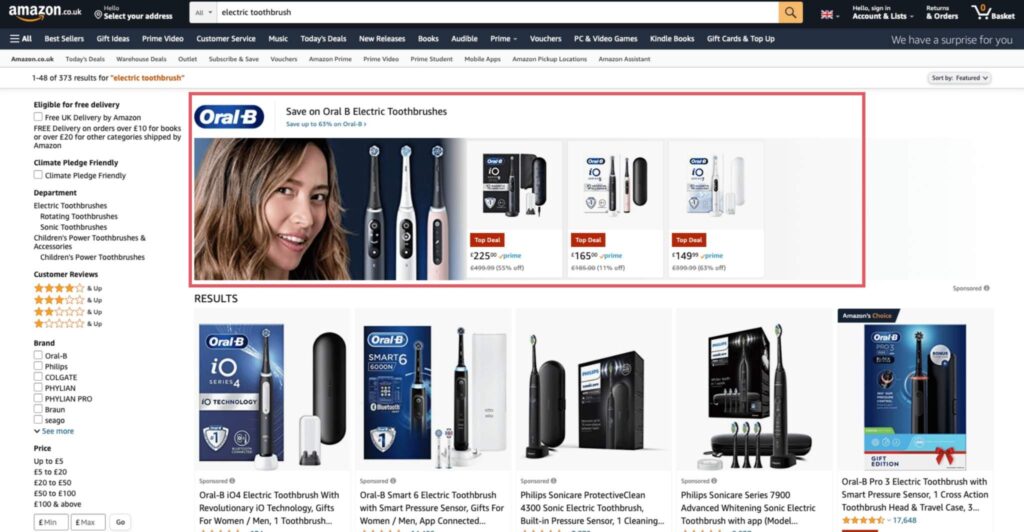
Sponsored Display
Sponsored Display is a newer Amazon Digital PPC ad type that helps you retarget shoppers who visited your product page but didn’t make a purchase. What makes this ad type different is that it appears both on Amazon and across third-party websites and mobile apps, including platforms like Google, Facebook, and even Netflix.
To run Sponsored Display campaigns, you must be a brand-registered seller on Amazon first.
Best For: Retargeting, increasing visibility beyond Amazon, reminding interested shoppers to come back and purchase.

Key terms and metrics to track in Amazon PPC
Before you start spending on ads, it’s important to understand the key numbers behind your Amazon PPC performance. These metrics help you measure success, spot problems, and make better decisions.
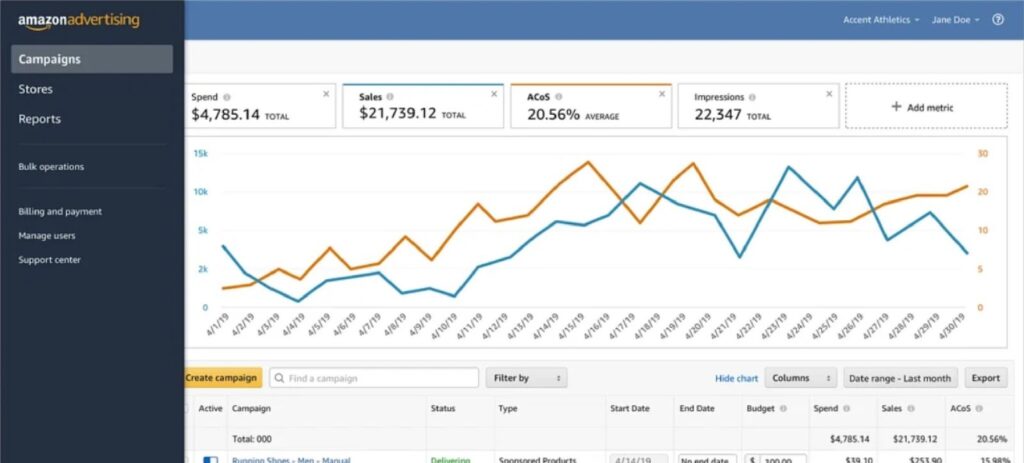
Here are the most important PPC terms you should know:
- Impressions: how many times your ad appears to shoppers.
- CPC (Cost Per Click): how much you pay each time someone clicks your ad.
- CTR (Click-Through Rate): how often people click your ad after seeing it.
- Formula: CTR = (Clicks / Impressions) × 100
- CVR (Conversion Rate): how often clicks turn into purchases.
- Formula: CVR = (Sales / Clicks) × 100
- ACoS (Advertising Cost of Sales): the percentage of ad-driven revenue that was spent on advertising.
- Formula: ACoS = (Advertising Spend / Advertising Revenue) × 100
- TACoS (Total Advertising Cost of Sales): the percentage of total revenue (including both ad-driven and organic) that was spent on advertising.
- Formula: TACoS = (Advertising Spend / Total Revenue) x 100
- ROAS (Return on Ad Spend): how much revenue you earn for every dollar spent on ads.
- Formula: ROAS = Ad Sales / Ad Spend
How Much Does Amazon PPC Cost?
This is one of the biggest questions new sellers have. Well, the short answer is — it depends. Costs can vary based on several factors, including your ad type, bidding strategy, keyword competition, and how well your product converts.
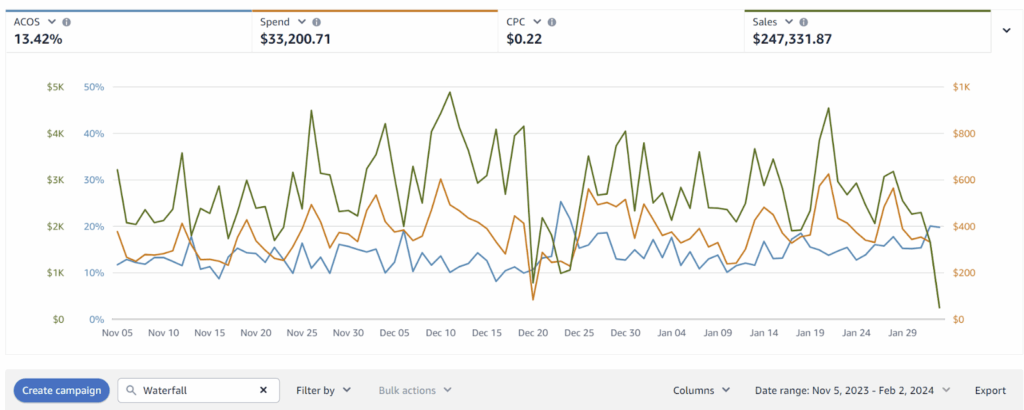
The type of ad you choose plays a major role in overall cost.
- Sponsored Products are typically the most cost-effective and beginner-friendly option, with clicks starting as low as $0.02.
- Sponsored Brands, which feature enhanced visuals and branding, usually start at around $0.10 per click.
- Sponsored Display ads can also begin as low as $0.02, but the final cost varies depending on where and how the ad is served.
Keyword competition also has a significant impact on your costs. High-demand keywords such as “wireless earbuds” are more expensive, while long-tail or niche keywords like “wireless earbuds for small ears” are typically cheaper and more efficient.
If you’re just getting started with Amazon PPC, you can begin with a small budget. Amazon recommends a minimum of $5 per day. However, your actual budget can range from as low as $1 per day to higher amounts, depending on your goals and how much you’re comfortable spending.
How to Set Up an Amazon PPC Campaign (Step-by-Step)
Now are you ready to launch your first campaign? Follow these steps from Megaficus to get started:
Step 1: Open Campaign Manager
- Go to your Amazon Seller Central account.
- Click on Advertising > Campaign Manager to get started.

Step 2: Choose your Campaign Type
- Scroll down and click the Create campaign button.
- Choose the type of ad you want to run: Sponsored Products, Sponsored Brands, or Sponsored Display.
- Click Continue under your selected ad type.
Step 3: Set your Campaign Settings
Fill in the basic campaign info:
- Campaign name: Use a name that helps you remember the product and campaign goal.
- Start and end date: Set a date range. Leave the end date blank if you want it to run continuously.
- Daily budget: This is the max amount you’ll spend each day. Start with at least $1–$5 per day, or more if your keywords are competitive.
Step 4: Choose your Targeting Option
Pick how you want Amazon to target shoppers:
- Automatic Targeting: Amazon selects relevant keywords for you. Great for beginners.
- Manual Targeting: You choose your own keywords. Better for more control and optimization.
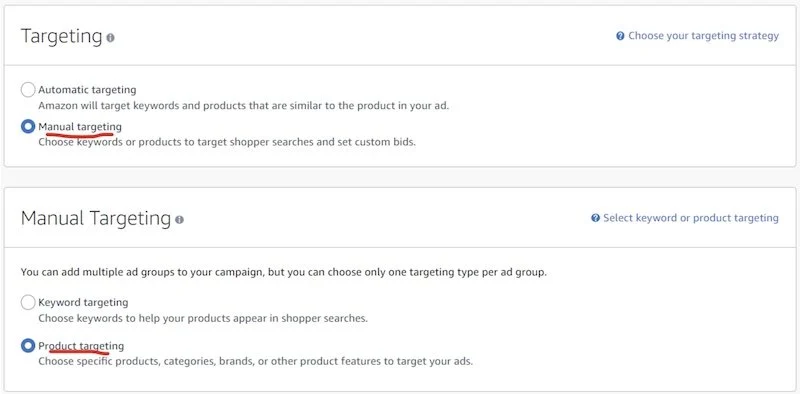
Step 5: Select your Keywords (for Manual Targeting)
If you choose Manual Targeting, you’ll need to pick the keywords that match what shoppers search for.
You can also add Negative keywords (optional). These are terms you don’t want your ad to appear for. You can skip this at the beginning.
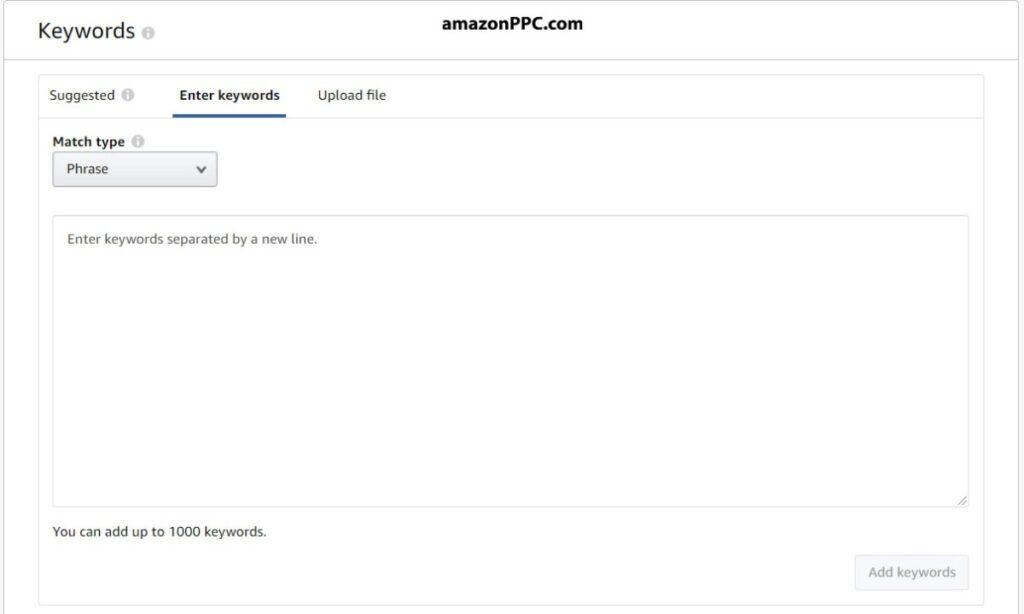
Step 6: Choose a Bidding Strategy
Choose one from these options:
- Dynamic bids – down only: Amazon lowers your bid when a sale is less likely, helping you avoid wasting ad spend.
- Dynamic bids – up and down: Amazon raises your bid when a sale is likely and lowers it when it’s not.
- Fixed bids: You set a fixed bid, and Amazon won’t change it unless you do.
Megaficus’ Tip: If you’re new to Amazon ads, choose Dynamic bids – up and down to maximize your chances of getting sales.
Step 7: Create your Ad Group
Fill in these categories to create an Ad Group that helps organize your campaign:
- Ad group name: Name it based on the product and campaign type.
- Products: Choose the product you want to advertise. Start with one product per ad group to keep things simple and focused.
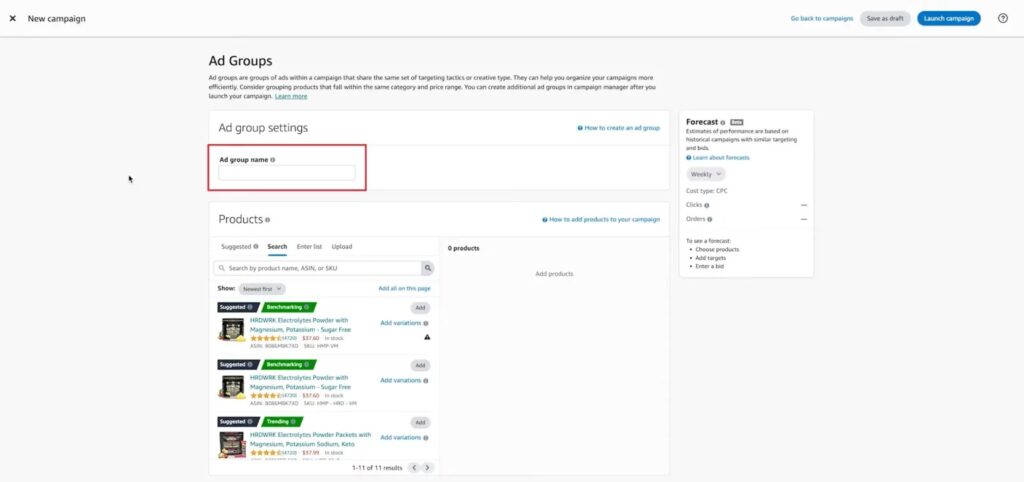
Step 8: Set your Bid Amount
Decide how much you want to pay for each click:
- Default bid: A general bid for all targeting types. Start around $0.5–$1.50.
- Bids by targeting group (for Automatic Targeting): Set separate bids for:
- Close match
- Loose match
- Substitutes
- Complements
This gives you more control over where your ad appears.
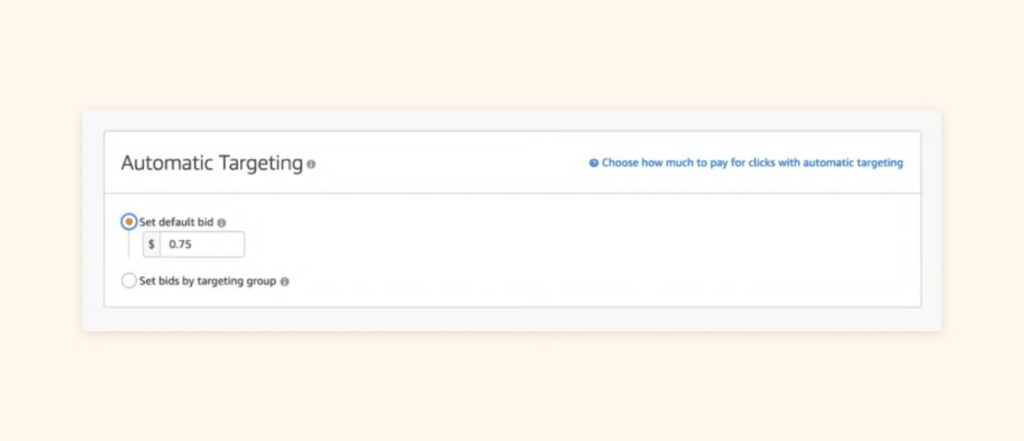
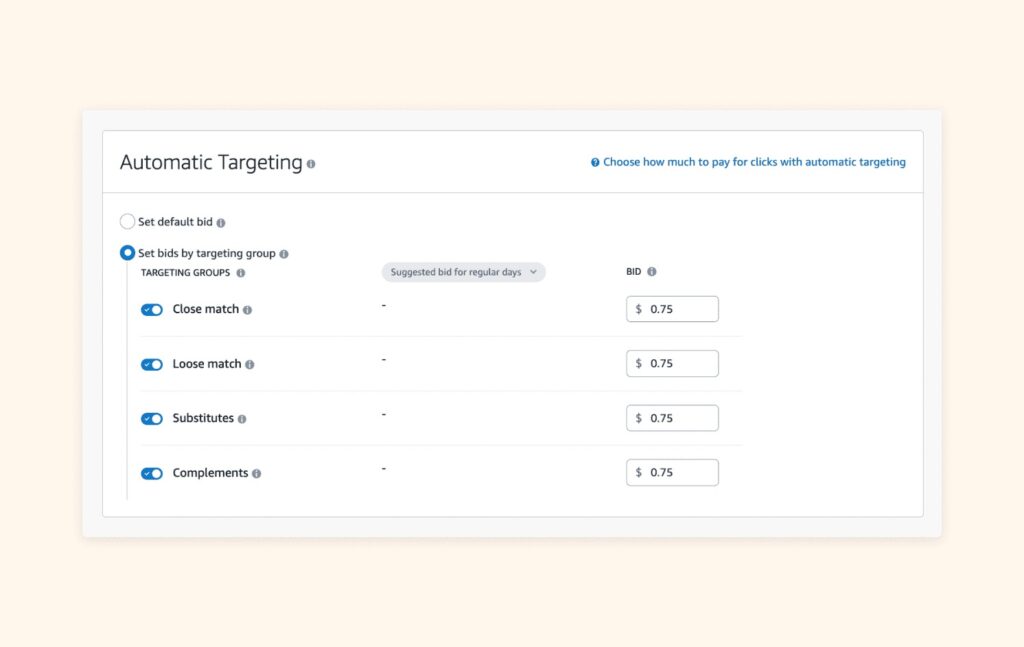
Step 9: Launch your Campaign
Amazon will automatically generate an ad using your product’s listing details (title, images, price, etc.).
You should review all settings and, when ready, click Launch campaign.
Then, your ad will typically go live within a few hours after Amazon reviews and approves your campaign.
Step 10: Monitor and Optimize your Campaign
After launching, keep checking your campaign performance:
- Track clicks, sales, and cost-per-click
- Adjust your bids and keywords over time
- Pause ads that aren’t working and invest more in those that perform well
Megaficus’ Tips to Optimize Amazon Digital PPC
To make your ad spend more effective and increase sales, we have listed some effective ways to optimize your campaigns:
- Focus on high-converting Keywords and use Search Term Reports: By analyzing Amazon’s Search Term Report, you can identify which keywords actually lead to conversions and uncover long-tail opportunities that match how customers search.
- Implement Negative Keywords to avoid irrelevant clicks: Adding irrelevant terms as negative keywords prevents your ads from appearing in unqualified searches, helping you save money and improve targeting.
- Perform A/B Test on different creatives and ad strategies: Trying out various headlines, images, and product descriptions can help identify what draws more attention and clicks from your target audience.
- Using tools like Amazon Ads Console or third-party PPC platforms: These tools provide automation, data analysis, and optimization features that save time and support long-term growth.
Frequently Asked Questions (FAQ) about Amazon PPC
You can start seeing clicks and impressions within hours. Sales results usually take a few days to a couple of weeks, depending on your product and targeting.
Yes, you can. In fact, PPC is a great way to get your new product seen and start generating sales.
Absolutely. You can set daily budgets and adjust bids anytime to stay within your spending limits.
No, many sellers manage PPC on their own. But if you want expert help or save time, working with an agency can be useful.
While PPC doesn’t directly affect organic rankings, strong ad performance can lead to more sales, which may improve your product’s organic placement over time.
Run smarter Amazon PPC Campaigns with help from Megaficus!
Amazon PPC is more than just setting a budget – it’s about strategy, testing, and results. Let Megaficus help you run data-driven campaigns that deliver real growth. Contact us to get started.


